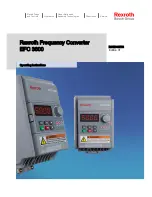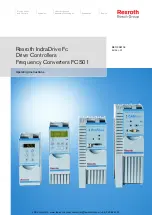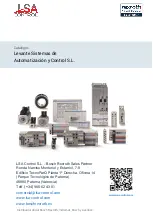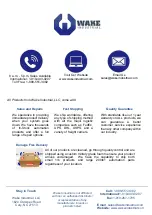
DIGIVEX Little Drive Servoamplifier
77
PVD 3530 GB 01/2005
7.2.1.1 Handling operational malfunctions
There are 2 kinds of malfunction:
•
Malfunctions that require stoppage of the system
These malfunctions must lead to:
♦
The opening of the main contactor and disconnection of the power supply
(controlled by the DRV OK X2/6, X2/18 logic output) (See § 5.2)
♦
The fault is stored in the axis and the data is displayed on the front panel.
Malfunction leading to a reduction in the system's dynamic characteristics.
♦
For excessive DLD dissipater temperature.
♦
For excessive mean drive current or excessive rms motor current, if the drive
parameter setting allows operation to continue. The choice of continuing
operation with reduced current or stopping is made by the "current protection"
strategy in the "servo-control" window of the parameter setting software.
These malfunctions lead to:
♦
A reduction in the motor current
♦
The data being displayed on the front panel (7-segment display flashes).
7.2.1.2 Current monitoring
Mean drive current
To prevent the motor thermal tripping by the thermal sensor, the drive monitors the rms
current [I
2
= f(t)].
The rms current is compared to the permanent permissible current at slow rotation by the
motor Î
0
(after first order filtering following motor time constant). This data, which is
characteristic of the motor, is known to the drive when the choice of motor - drive is
made.
As before there is a choice between two strategies:
♦
Strategy 1: Stoppage due to the "DRV OK" output shifting to logic 0 which must
induce the opening of the main contactor
♦
Strategy 2: Reduction of the pulse current at 0.9 Î
0
motor. The 7-segment display
flashes.
This manual was downloaded on www.sdsdrives.com
+44 (0)117 938 1800 - [email protected]







































